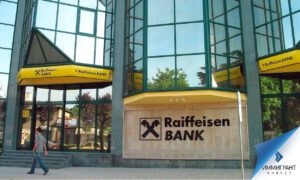
The fall of the Ukrainian economy in 2022 will be about 33% according to the baseline scenario, in which the war will last for another month and a half at the most, Alexander Pecheritsyn, a leading analyst at Raiffeisen Bank (Kyiv), said.
“If the war lasts until the end of the year, then (GDP) could fall as much as 45%,” he said at a zoom conference on Tuesday.
Pecheritsyn specified that this is the bank’s third forecast since the beginning of the war. According to him, the initial decline in the economy was estimated at about 15% based on previous fast-moving conflicts in the world, for example, in Georgia. Then, in March, the bank estimated a decline as low as 24%, taking into account the gross regional product and the map of hostilities. In particular, as part of this analysis, a 34% decrease in this year’s crop is expected.
Serhiy Kolodiy, Chief Manager for Macroeconomic Analysis at Raiffeisen Bank, recalled that in 2014-2015, the fall in GDP was approximately 25% compared with pre-war Ukraine (in official statistics, data are compared only for controlled territories).
Pecheritsyn added that in terms of GDP, the bank estimates a 39% drop in private consumption due to the emigration of 15% of the population, lower incomes and negative consumer expectations.
According to him, domestic investment, which is the most vulnerable component, will fall by half this year under the baseline scenario.
“On the positive side, production relocation programs have little effect, but on the scale of the total output, of course, it is small,” the analyst said.
Speaking about inflation, Pecheritsyn noted that the bank still maintains its forecast for this year at 17% after 10% in the past. He explained that the volume of purchases by the National Bank of military bonds in the amount of UAH 60 billion is still within the limits of controllable, in addition, state control over prices and the freezing of utility tariffs affect.
In general, speaking about the work of analysts during the war, Pecheritsyn said that the bank began issuing weekly military reviews.
“War is a new challenge, we are no strangers to them, since there was a coronavirus two years ago. But the current (challenge) is much more difficult,” he stressed.
Pecheritsyn until February of this year served as chief economist at Credit Agricole Bank (Kyiv).
As reported, according to the World Bank, which before the war expected the Ukrainian economy to grow by 3.2% this year, it will fall by 45.1%. According to his report from early April, in 2023 the Ukrainian economy is expected to recover by only 2.1%, which is also worse than previous expectations of 3.5%.
The National Bank of Ukraine predicts a decline in the country’s GDP this year by at least a third, refusing to make more detailed estimates. The IMF expects a 35% decline.
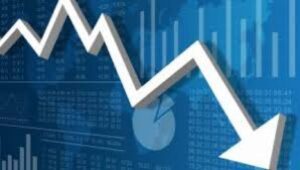
The gross domestic product of Ukraine in the first quarter of 2022 fell by 16% compared to the same period last year, the country’s Ministry of Economy estimates.
“Our forecast for GDP decline in the first quarter is 16%, and the annual decline could reach 40%,” First Deputy Minister Denis Kudin is quoted in a press release from the department.
He noted that those industries where remote work is impossible, in particular, aviation, maritime transportation, and the service sector, where businesses work directly with consumers, have suffered the most.
At the same time, Kudin pointed out that over the past 10 days, the economy as a whole has begun to recover, business in safe regions is returning to work, and farmers have begun sowing.
The ministry noted that in the process of economic recovery, special attention will be paid to supporting industries that directly provide for the livelihoods of citizens and strengthen the defense capability of the state. “We are talking about agriculture, food production, retail, utilities and energy services, industries working on mobilization orders,” the press release says.
According to the Ministry of Economy, Ukraine in March of this year exported 5.97 million tons of goods worth $2.7 billion, which is more than half the quantity and value indicators for February. Imports fell three times – to 1.6 million tons for $1.8 billion.
Ores, corn, ferroalloys and oil remained the main export items. The export of metals (including flat-rolled products – decreased by almost 10 times, to 47,000 tons) and agricultural products was especially affected, the ministry noted.
“For some metallurgy positions, exports were not made at all. This is primarily due to the physical destruction of metallurgical facilities and the stoppage of production,” the ministry commented.
In March, Ukraine exported 1.1 million tons of corn, 309 thousand tons of wheat, 118 thousand tons of sunflower oil, 40 thousand tons of soybeans. This is four times less than in February.
Currently, the most important imports are gas, oil, oil products and coal.
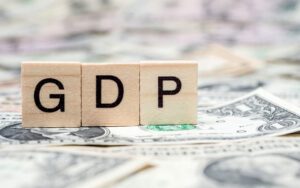
Ukraine’s GDP grew 3.4% in 2021 after falling 3.8% in 2020, the State Statistics Service said.
Nominal GDP was UAH 5.46 trillion and per capita GDP was UAH 131,940.
GDP was $200.09 billion at an average exchange rate of UAH 27.29/$1, and per capita GDP was $4,840.
The Q4 2021 GDP growth estimate was raised to 6.1% from the 5.9% given at the start of February.
The Statistics Service raised its Q2 and Q3 2021 estimates for the second time, to 6% from 5.7% and to 2.8% from 2.7%, respectively, the initial estimates being 5.4% and 2.4%. GDP fell 2.2% in Q1 2021.
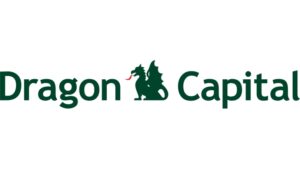
Head of Dragon Capital Tomas Fiala predicts the growth of Ukraine’s gross domestic product (GDP) by 3% in 2022.
“Our forecast for GDP growth in 2022 remains unchanged, we expect growth at the level of 3%,” he said during the European Business Association (EBA) “Global Outlook: Reality Check” conference.
According to him, the exchange rate of the national currency during the year will be at the level of UAH 29-30/$1. At the same time, the hryvnia exchange rate will be stable in the first half of the year, while its volatility may begin in the second half of the year, since Ukraine will have to import a significant amount of energy resources.
The head of Dragon Capital added that currently his company continues to invest.
“We continue to invest in our investment projects, we continue to build industrial parks in Kyiv and Lviv,” Fiala said.

Analysts from Morgan Stanley have maintained an estimate of Ukraine’s GDP growth in 2021 at 3.4%, and 4.2% in 2022, according to the forecast materials available to the Interfax-Ukraine agency.
According to the forecast, inflation in Ukraine will decrease to 9.5% by the end of 2021 and to 5.7% by the end of 2022.
Morgan Stanley experts also forecast a current account deficit of 0.5% of GDP in 2021 and 2.5% in 2022.
They expect that the International Monetary Fund’s Stand-By Arrangement is likely to be extended by six months – until the end of June 2022.
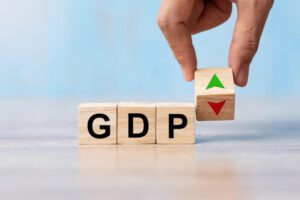
The growth of the gross domestic product (GDP) of Ukraine in January-August 2021 accelerated to 2.9% compared to 2.1% in January-July 2021, the Ministry of Economy has said.
“In January-August 2021, according to the calculations of the Ministry of Economy, the composite production index (CIP) grew by 2.1% (by 1.3% in January-July 2021, a fall of 5.8% in January-August 2020), GDP – by 2.9% (2.1% in January-July 2021, a fall of 5.7% in January-August 2020),” the ministry said in the August survey of economic activity published on Monday.
As the ministry said, in August 2021, an increase in production volumes was demonstrated by almost all types of economic activity, except for wholesale trade, which was supported by a high price level on global commodity markets, an active increase in agricultural production, and optimistic business sentiments amid the “green” level of epidemic danger throughout territory of the country.
“The existing recovery growth does not allow us to speak of a full-fledged post-crisis economic recovery, this requires more time. In addition, the internal economic recovery is also influenced by global changes and risks,” the Economy Ministry said.
Among the pressure factors is the aggravation of political and economic relations between individual countries, Russia’s abuse of a dominant position in the gas market and a sharp rise in gas prices, as well as the spread of a new wave of a mutated strain of coronavirus in the world.
As reported, in 2020, the Ukrainian economy fell by 4%. This year, the Ministry of Economy and the government expect growth by 4.1%, and the National Bank – by 3.8%.